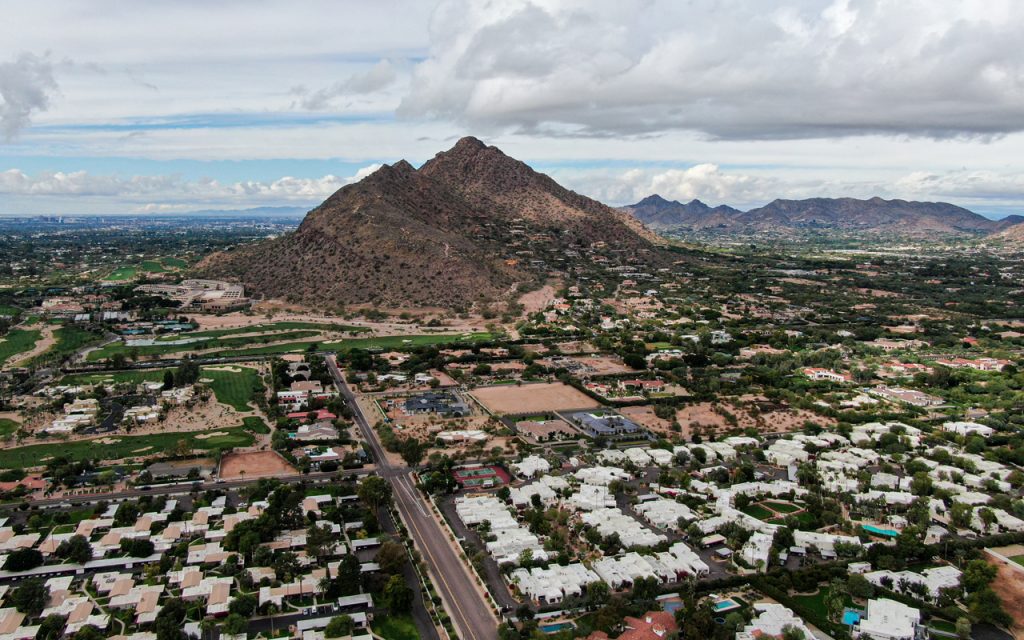
Fantastic residences. Great businesses. Delicious restaurants and luxury resorts. Add in the low cost of living, plentiful job opportunities, and rapidly expanding infrastructure, and you can see why Arizona is becoming a bustling center for living, work, and entertainment. Faced with quite the opposite circumstances in California, it’s clear why Arizona living is such an attractive place for this next generation of family starters to put down some roots.
Phoenix is more than just a state in the Grand Canyon. The Phoenix metro area has become one of the most popular and desirable locations globally, with numerous companies growing or establishing roots in the Valley, multiple entertainment venues, restaurants, and resorts. An affordable cost Phoenix living, behind Dallas, Houston, and Austin, was ranked as the fourth most attractive metro in the country by Millennials in a Meyers Research study published in March 2019.
So why are so many of California’s up-and-coming generation moving away from the Golden State? Let’s take a deeper look at the statistics and facts that explain this demographic and geographic shift.
Why are Millennials Leaving California?
California is a magical state. It is one of the few places in the United States where you can be skiing down the snowy mountain slopes in the morning, only to end your day with a relaxing bonfire on the beach. There is the beautiful scenery of all kinds up and down the coast and no end to the types of entertainment and attractions one can attend. California embodies the spirit of westward expansion and is home to some of the most powerful and influential people on the planet. Fine dining, rich history, beautiful scenery, beautiful people, first-class merchants, and shopping; what else could an up-and-coming California generation of people ask for?
These glamorous features make the idea of living in California picturesque. The truth of the matter is these things that have made California such a wonderful place have also made it quite an expensive place to live, especially if you want to raise a family. The hard truth of the matter is that surviving, let alone thriving, is not something every millennial can do. Those who can stay in California tend to have incredibly high-paying jobs, usually in Medicine-, Law-, or Technology- related fields. Those who don’t often have either inherited property or money from family as a means of survival. With such an uneven playing field, how can a millennial born in California without a silver spoon in their mouth afford to stay in this expensive state?

When it came to people leaving big U.S. cities in the second quarter of 2019, the San Francisco Bay Area beat out Los Angeles, Washington, and Chicago. It was only second to New York City in terms of population. During those three months, more than 28,190 people left the Bay Area, almost double the pace of 2017.
According to the United States Census Bureau, about 190,000 people left California in 2018 then moved there. It was the second year in a row that the pattern had been negative. However, due to the birth rate, the population continues to grow. According to the California Department of Finance, the state’s population increased by 141,300 people between July 2018 and July 2019, increasing the total to 39.96 million people.
According to a recent Edelman Trust Barometer survey, 53 percent of residents and 63 percent of millennials in the country’s most populous state consider leaving due to the high cost of living. The majority of those leaving had annual incomes of less than $100,000, while the state has seen an influx of those with incomes of $100,000 and higher.
The Problem is Property
No matter how you frame it, the core of California millennials’ problem is the inability to purchase the property. Couple this with steadily increasing rent prices and a stagnant minimum wage, and you have a recipe for emigration. It is not uncommon for millennials to be denied a home loan with a monthly cost of $1,800, only to end up paying $2,200 to rent a smaller place. How exactly does this make any sense?
The average median sales price of a home in California in 2021 is nearly $650,000. Compare this to the average median sales price of a home in Arizona in 2021, which was $350,000. This number is an increase of nearly 20% compared to an almost 2% decline for California.

To afford the average home in California, you would need to make a household income of $200,000. You would need to make nearly $17,000 a month in California to afford that. In comparison, affording the average home requires a combined household income of roughly $52,000 to get an equivalent or larger property in Arizona. That’s less than $1,000 a month!
Even in a two-income family, hitting the $50K mark is significantly simpler than hitting the $200K mark. According to the U.S. Census Bureau data, the average salary for a millennial is $47,000 per year. That breaks down to about $900 per week. You don’t need an advanced degree in mathematics to understand why Arizona living is such a desirable place for California ex-pats.
Why are Millennials Choosing Arizona?
The answer is multifold, but it starts again with the property. As we mentioned above, the property values are lower in Arizona (albeit steadily on the rise), and often the properties larger. In simplest terms, you get a lot more bang for your buck in Arizona.
Millennials are at the age where the eldest of them have begun families. The majority are starting or considering starting families, and the youngest of them are waiting in the wings to reproduce. On the whole, this generation has entered the prime baby-making years, and the corresponding demand for housing goes with it. The amenities and appeal of a brand new, customized home featuring the latest in construction efficiencies, as well as proximity to a greater metro area without the need to commute, are strong selling points in favor of a move to Arizona living.
Not only does the housing become in-demand, but housing with enough rooms and outdoor space for pets and children to grow and play also becomes premiums. The average home in California has significantly less indoor and outdoor space than the average Arizonian home. Considering that the weather is relatively similar in Arizona, most California ex-pats find the transition to desert temperatures easier than switching to colder or rainier climates.
Arizona’s low cost of living and pleasant environment makes it an ideal location for companies seeking employees. Tucson employers, he said, work hard to recruit new workers, which leads to increased migration. Since the job market is tight, they must import talent from other states if they can’t find it locally.
How the Coronavirus Flattened the World
One of the greatest and unexpected results of the novel coronavirus pandemic that swept the globe in 2020 and 2021 was the large-scale adoption of work from home methods. We quickly adapted to virtual meetings, working in our pajamas, and never having to smell someone’s microwaved fish lunch in the breakroom. It was a magical time for those who did not work on the front lines or in an essential industry. You could say that the pandemic and the technology we used to survive flattened the business world as we knew it, breaking down barriers of communication and work collaboration like never before.
The lesson that businesses worldwide learned was how much they truly needed their staff to work on-site. Many companies and industries found that they were just as, if not more efficient, working from home than in the office. Most work-from-home employees would tell you that they ended up working more hours and on weekends when they previously wouldn’t. The traditional officer manager might not like it, but numbers don’t lie, and they say that working from home was an overall success.

As we begin to approach the light at the end of the pandemic tunnel, people start to return to our usual way of life. As we do, businesses assess what they saw and learned during the pandemic and reevaluate how they operate from the ground up. For a lot of companies, this means continuing with the work-from-home model indefinitely. Some companies implement a hybrid model, keeping some employees at home while returning other essential workers to the office.
What this means for the average employee is a newfound sense of freedom and flexibility. With that freedom comes the realization that paying to stay in an expensive area near your office or worksite is no longer a necessity, and for most, a downright foolish proposition (especially if they have any aspirations of having a family). The logic is simple: why pay more when you can have a larger home for less money and still keep your income when Arizona and Phoenix living is just one state away!
When you settle in Arizona and are ready to design your backyard patio, come visit our showroom at All American Outdoor Living.
